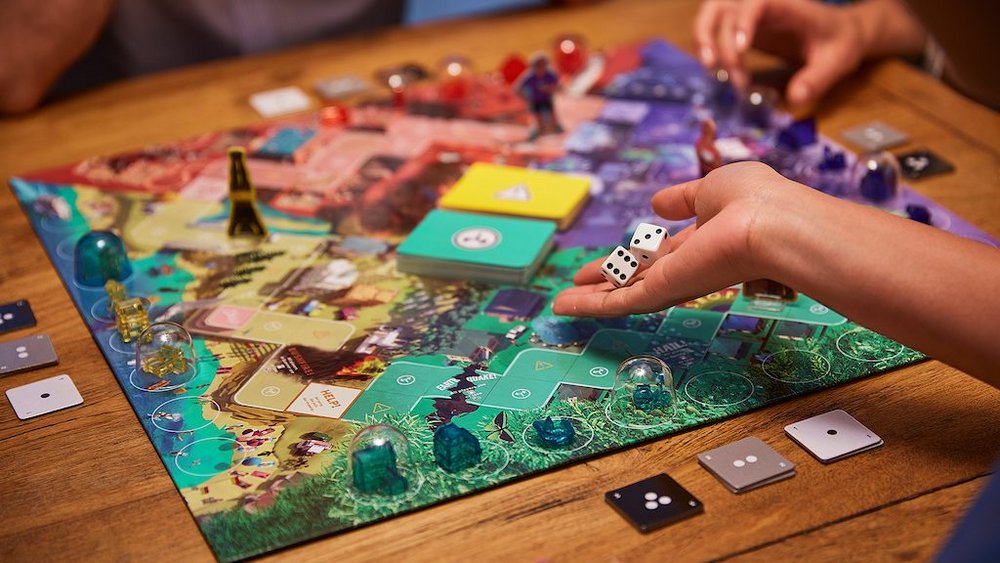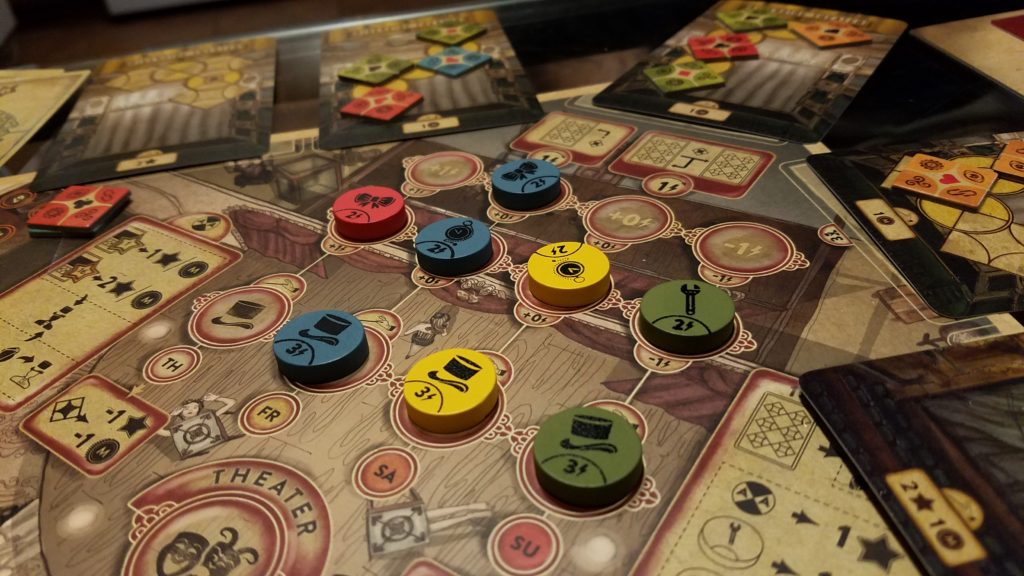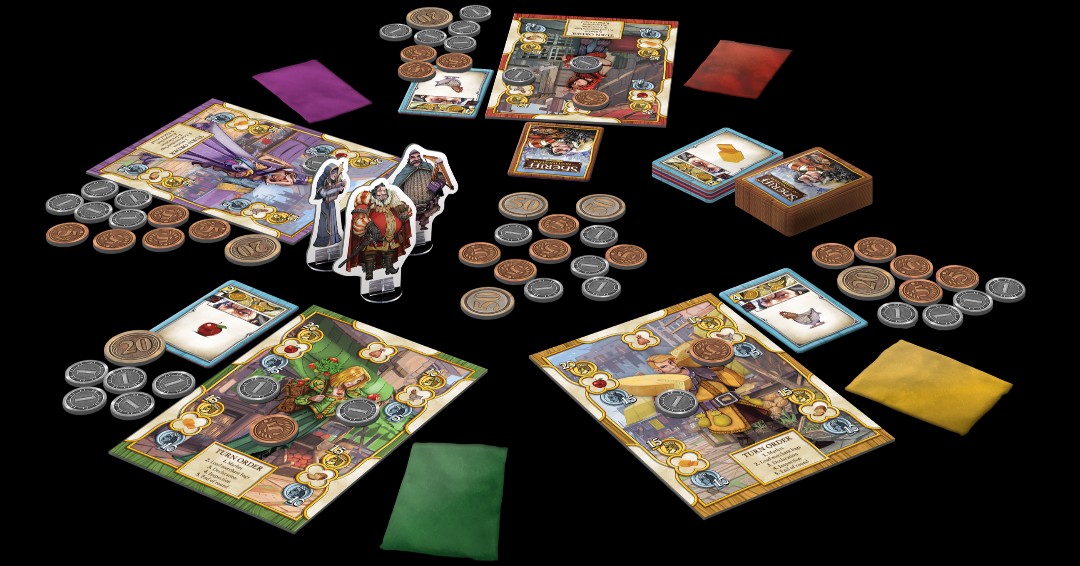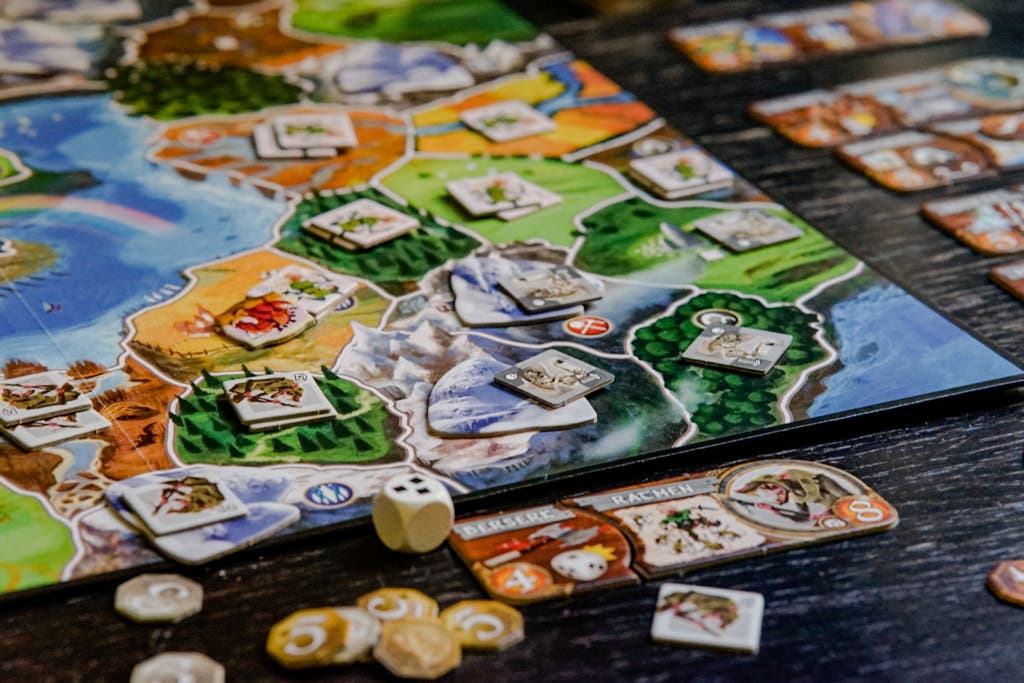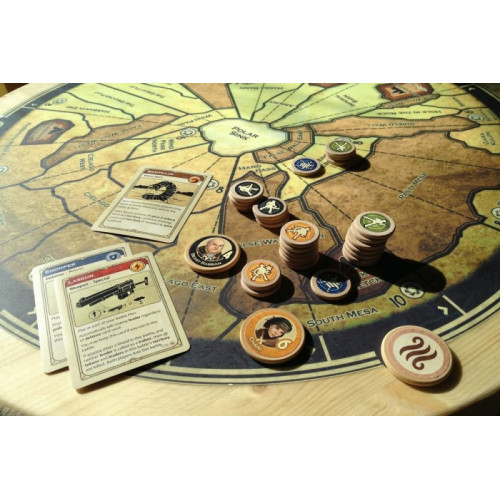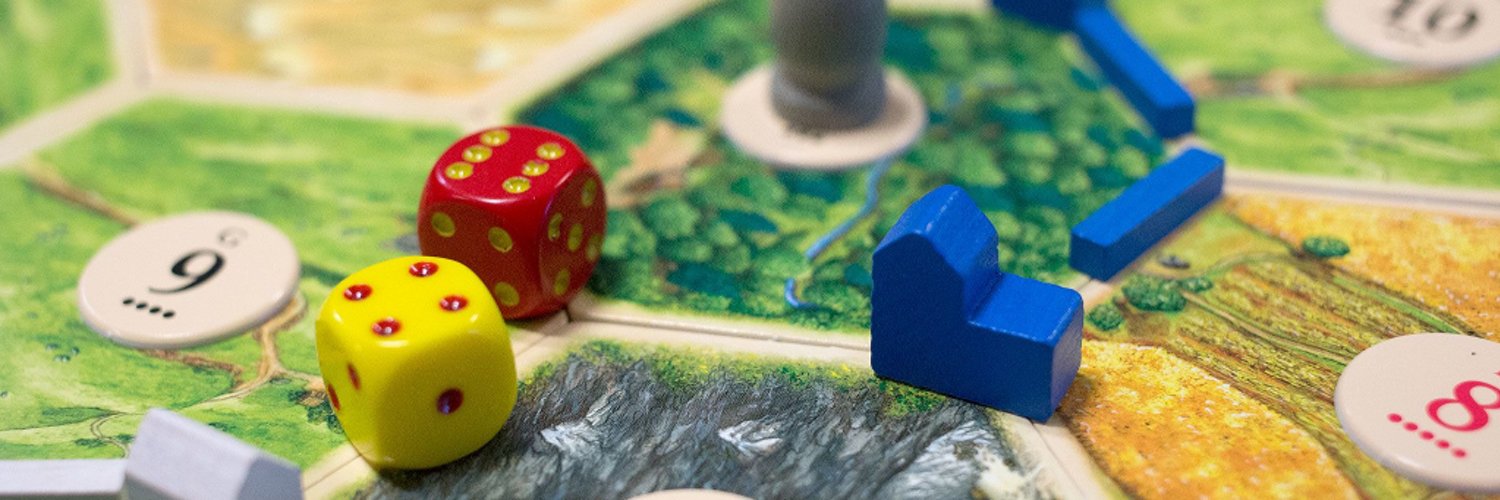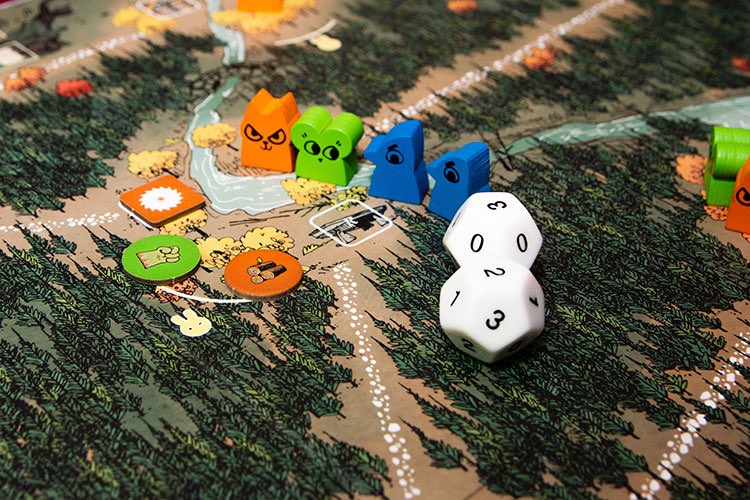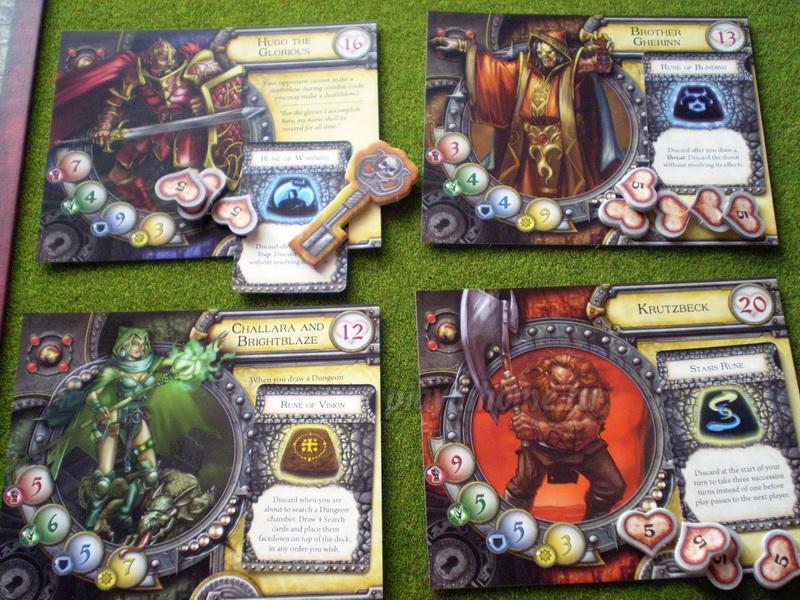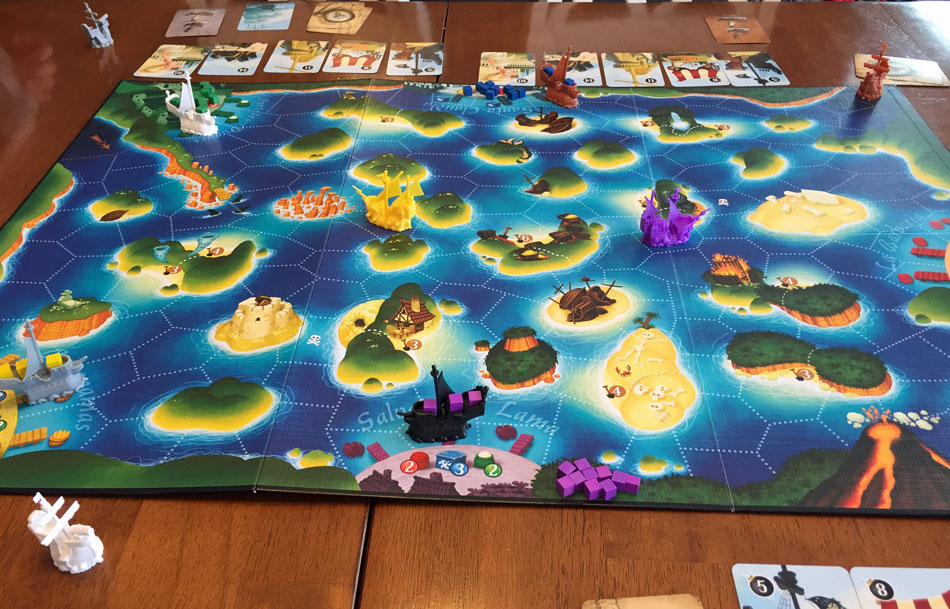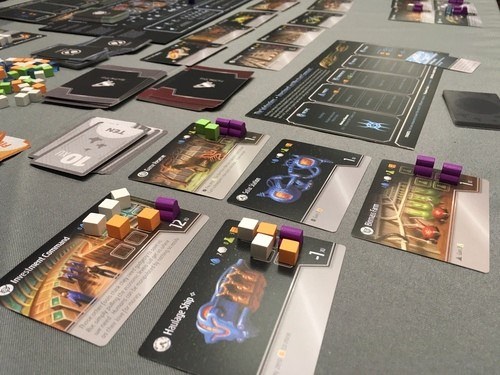The Semi Bluff is another Useful Tool
The semi bluff is an intimidation tool with late game potential. Essentially you’re trying to scare away other players with the potential of your hand. If other players seem mostly uninterested in the pot, and the cards on the table don’t go together well, you can raise a bet, or place a bet of your own to try and intimidate the other few players even if you don’t have a strong hand yet. The key is to have at least AK, or another high set of pocket cards that can easily make at least a strong pair. If someone calls your raise you know they have a solid hand and you’ll most likely lose on the next play, you should seriously consider folding at that point because without even a pair at this point you won’t get a winning hand next turn no matter what.
Stone cold bluffs are rarely a good idea and should be left to the professionals or heads up play.
Action 1: Auction
The current player turns over the topmost card on the stack. All other players bid simultaneously on this card. Each subsequent bid must be higher than the preceding one.
The auctioneer may not participate in the bidding. When there are no higher bids, the auctioneer accepts the highest bid by saying: “30 going first, 30 going second and gone for 30!”
It is possible to get a valuable animal card for the bargain price of 10, or in the same manner, to pay much more than the value of the animal! When the bid is accepted, the auctioneer hands the animal card to the highest bidder.
The winning player then pays the money to the auctioneer. However, after the auction, the auctioneer may pay the value of the highest bid to the highest bidder and take the card for themselves.
If nobody wants to bid on an animal, the player auctioning off the card gets it for free.
The players must display all owned animal cards openly in front of them on the table.
No Change
If a player doesn’t have the exact amount of money offered and, instead, has more, the other player does not give back change.
Player is Unable to Pay
If a player cannot pay for their bid, they must reveal all of their money cards and the bidding process is repeated without them.
When nobody bids for an animal card, the auctioneer must call it out by saying: “A goose going first, a goose going second and a goose going third!” If no one has bid anything by then, the auctioneer may obtain the card for free.
However, if another player makes an offer, regardless of how low, the auctioneer passes the animal to them and receives the money (as normal), except when they choose to purchase the card for themselves.
The Donkey
Whenever the donkey is turned over for auction, the game is immediately interrupted. The current player deals everybody additional money cards.
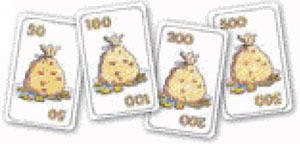
One value 50 money card at the first donkey, one value 100 money card at the second donkey, one value 200 money card at the third donkey, and one value 500 money card at the fourth donkey. When everybody receives their money, the donkey is auctioned off as normal.

About This Article
wikiHow is a “wiki,” similar to Wikipedia, which means that many of our articles are co-written by multiple authors. To create this article, 15 people, some anonymous, worked to edit and improve it over time. This article has been viewed 210,711 times.
20 votes – 70%
Co-authors: 15
Updated: July 1, 2021
Views: 210,711
Categories: Shedding Card Games
Bluff is a fun card game where players try to lie without getting caught so they can get rid of all their cards first. To play, first deal all of the cards in a standard deck out to the players one at a time. The player to the dealer’s left goes first. They must play one or more 2’s from their hand face-down in the middle of the playing area and announce how many 2’s they’re playing. If they don’t have any 2’s, they still must play one or more cards face-down and bluff. Once they’ve played their cards, the player to their left must now play one or more 3’s. The next player must play one or more 4’s, and so on. Once someone plays aces, the next player starts back at 2’s again. Any player can accuse another player of bluffing right after they play their cards. At that point, the player whose turn it is reveals the cards they just played. If they were bluffing, they pick up all of the cards in the middle of the playing area. If they weren’t bluffing, the player who accused them picks up all of the cards. The game continues until one player runs out of cards first and wins! To find out how to play other versions of Bluff, read on!
Did this summary help you?YesNo
Português:Jogar Duvido (Jogo de Cartas)
Deutsch:Bluff spielen
Nederlands:Liegen spelen
日本語:ブラフで遊ぶ
final thoughts
Poker bluffing is an art because the player needs to consider a lot of factors.
At the same time, the paradox of bluffing is that if nobody has ever caught you bluffing, you are either not bluffing enough or you are one of the best bluffers.
You would be bluffing too frequently if you were caught almost every time you bluff.
Late positioning and sensing weaknesses should form part of your bluffing strategies and though they do not usually win a pot, they narrow it down to a few people.
Now you should go and practice your newly learned poker bluffing skills by playing some real poker.
Mar 28, 2018
Does Your Hand Suck?
GET YOUR FREE TOP SECRET POKER STRATEGY E-BOOK AND START WINNING ALMOST EVERY TIME!
Tips
Sometimes, if you bluff, you won’t even have to pick up any cards if there are none in the pile.
Thanks!
When you bluff, using one or two cards is best. It isn’t likely, for example, that someone will have all four sixes.
Thanks!
The more cards you have, the more people bluffing you can spot.
Thanks!
When a player takes their turn, look at your cards. If he/she said, “two jacks” and you have three, he/she must be bluffing.
Thanks!
To make it look like you’re bluffing, set down your cards and nervously say the amount of cards you have sort of quickly. Somebody might say “Bluff!” and have to pick up all the cards from the pile.
Thanks!
Say the name of a card whilst bluffing and put it in the pile. When it’s your turn again say the same name of the same card without bluffing; it’ll confuse your opponents.
Thanks!
Submit a Tip
All tip submissions are carefully reviewed before being published
Thanks for submitting a tip for review!
Advertisement
Rely on Quick Bluffs
Quick bluffs in online poker are one of your best options and the only type of bluff that you should be using regularly. This is the tool that you bring out to win a small pot when nobody else seems interested in it. For instance, imagine that you’re in late position at the table and everyone simply calls and looks uninterested. You can either get out of the hand now if you don’t have much, or you can take the offensive and try to small bluff your way to a small pot. Sure it’s not going to change the game for you, and it won’t make you rich, but a well-placed small bet will earn you money from a loser hand, and that’s the only real goal there.
Don’t be a Stone Cold Bluffer
Online poker bluffing is much too common, and it’s the cause of a lot of lost money. While the two types of bluffing listed up above are useful on occasion, a stone cold bluff, or a bluff when you have no chance is a very risky move and something you should avoid until you’re at the expert level. Unless you can figure out what the opponent is thinking and you know for sure this type of bluff will cause a fold, it’s the last thing you want to do. You’re better off folding and waiting for a better hand, than betting big while at the online poker room. You’ll save your chips for later, and still have the opportunity to bank if you don’t do this.
Action 2: “Cow Trade” (Kuhhandel)
As soon as two players own animals from the same sets, the player in turn may choose to offer the other player a “cow trade”. If more than two players have animals from the same set, then the current player can decide with whom they want to make the “cow trade” with.
The “cow trade” begins by player A making a hidden monetary offer to player B and telling them which of their animals they wish to trade.
You are permitted to bluff. For example, you are allowed to play a hand on the table that doesn’t have any money cards, to offer 0 value money cards, or to only include 0 value money cards in the offer. Once A’s player as the offer is on the table, player B must decide how they want to react by choosing one of the following options:
Option 1 – Counter-offer:
Player B puts a hidden counter-offer on the table. Both offers are swapped and counted face-down and silently. The player who was offered the most amount of money from their opponent must hand over their animal card.
Both players keep the money received from their opponent. If it happens that both players offered the same amount of money, then player A must redo their offer. Player B must again decide how they want to react.
If they make a counter-offer and again it turns out to be the same amount as player A’s offer, player B must give player A their animal card for free.
Option 2 – Accept The Offer:
Player B accepts the offer without making a counter-offer and hands player A the animal card that was being traded.
Special “cow Trade” (kuhhandel)
If both player A and player B own a pair of the same set of animals, then the trade will always be about the pairs. One of the players will trade off the pair of the opponent and complete his set of animals.
If one of the two players owns one card of the set and the other player owns a pair (or a three of a kind), then the trade will only be about one animal card //.
If there are no more animal cards in the stack for auctioning, trading becomes obligatory. Players who only have complete sets of animal cards cannot participate in the trading and, therefore, will be skipped.



